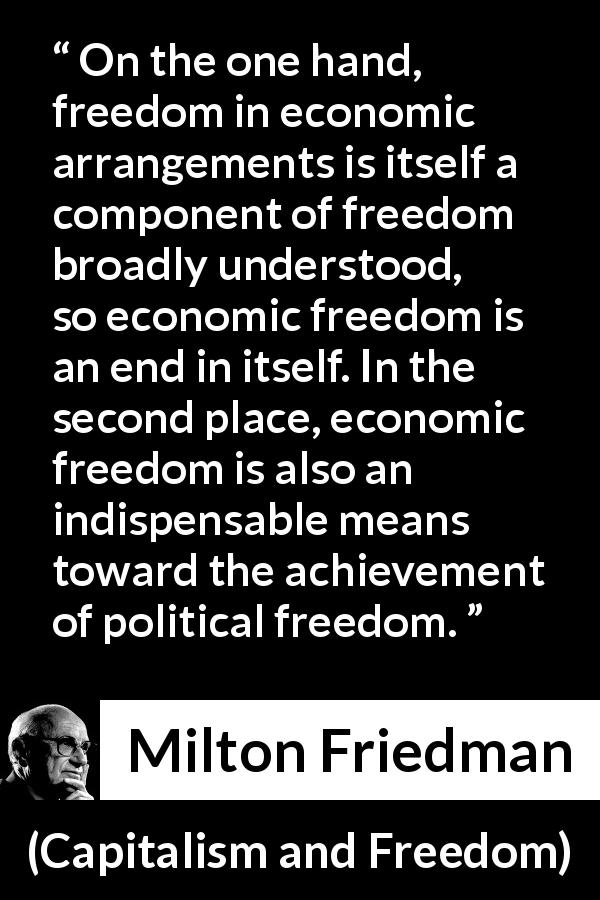


He also includes support for Civil Rights in the list, something somewhat controversial for his day.Ĭhapter 1 argues that economic freedom and political freedom are related and that if one wants to preserve and strengthen democratic institutions, economic freedom is a necessity. The introduction defines Friedman's conception of a liberal, the classical liberal of the 18th and 19th century who defends the decentralization of power, limited government, constitutionalism and the rule of law, cosmopolitan free trade, private property rights, free enterprise economics, and the standard liberal freedoms of speech, press, religion and the like, along with the advancement of the social progress of women. As a Nobel Laureate and monetary economist, Friedman's influence extends far beyond this book, but it is in Capitalism and Freedom that many of his core economic ideas are explained most clearly to the public.Ĭapitalism and Freedom contains an introduction, conclusion and twelve modestly sized chapters, all of which focus on one or another economic concern.

The book was widely read, selling half a million copies since 1962. Free trade has increased substantially since 1962, though not to the radical extent Friedman proposes. Today, the flat tax he advocated has spread throughout former communist countries, his floating exchange rate is used throughout the world and school voucher programs are becoming more popular. In fact, many of Friedman's proposals have been influential. Friedman's book is full of proposals that will seem shocking to some today but were particularly radical for his time. The book was a massive success, defending the economic institutions of the United States prior to the Great Depression.

Capitalism and Freedom was written by Milton Friedman in 1962 to defend what Friedman calls the liberal (or today what would be called libertarian) approach to economic policy in the face of very different views defended by social democrats or false liberals, as Friedman would have it.


 0 kommentar(er)
0 kommentar(er)
